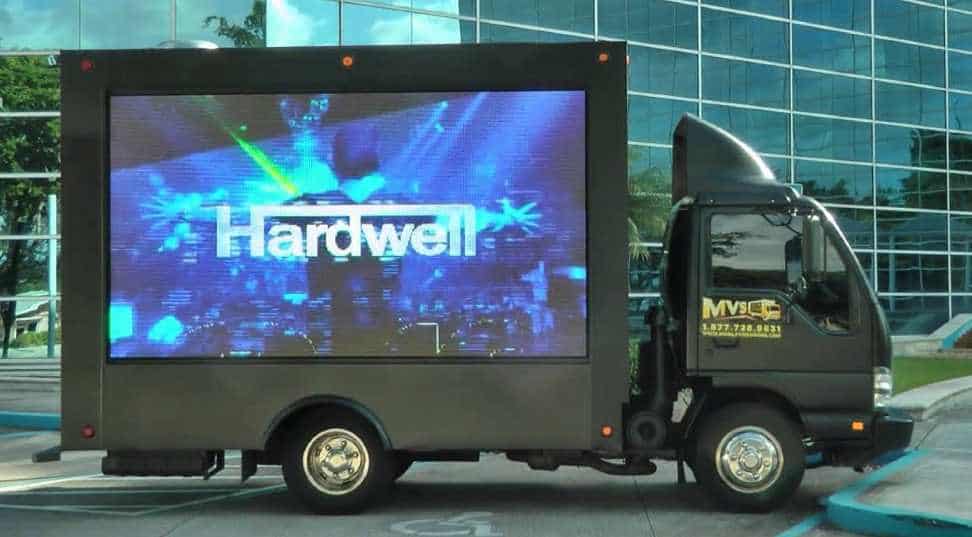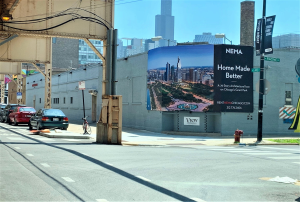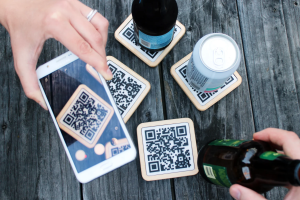In the dynamic world of out-of-home (OOH) advertising, marketers are constantly evaluating the most effective channels to capture attention, increase engagement, and drive conversions. Two impactful but distinct forms of OOH advertising—mobile billboard campaigns and in-hand advertising—offer unique benefits and challenges. But when it comes to maximizing your marketing dollars, which approach delivers a better return on investment (ROI)?
In this in-depth blog, we will explore the cost-benefit analysis of mobile billboard campaigns compared to in-hand advertising, diving into expenses, reach, engagement, targeting, and ultimately, ROI. By the end, marketing professionals will have a clear understanding of how to strategically allocate budgets between these two powerful advertising methods.
Understanding Mobile Billboard Advertising
Mobile billboard advertising involves placing large, eye-catching ads on vehicles—such as trucks, vans, or bicycles—that traverse high-traffic areas, ensuring that your message is seen by a broad audience. These mobile units can either follow specific routes or park at targeted locations during peak hours to maximize visibility.
Key Advantages of Mobile Billboard Advertising:
Wide Reach: Mobile billboards travel across cities and neighborhoods, ensuring exposure to a broad demographic.
High Visibility: With vibrant graphics and strategic route planning, mobile billboards can attract significant attention.
Flexibility: Routes and schedules can be adjusted to target specific events, neighborhoods, or times of day.
However, despite these advantages, mobile billboards come with certain limitations that can affect their ROI, especially when compared to more targeted methods like in-hand advertising.
Breaking Down the Costs of Mobile Billboard Campaigns
When evaluating mobile billboard campaigns, it’s essential to consider both direct and indirect costs:
Operational Costs:
Vehicle Leasing/Purchase: The cost of leasing or purchasing the vehicle can be substantial.
Fuel and Maintenance: Constant driving increases fuel consumption and wear-and-tear on vehicles.
Driver Salaries: Employing professional drivers adds to the operational expenses.
Insurance and Permits: Operating a branded vehicle requires insurance and, in many areas, permits for advertising.
Production Costs:
Billboard Design and Printing: High-quality, large-scale graphics are essential but costly.
Installation: Wrapping a vehicle with the billboard design involves specialized labor.
Campaign Duration and Frequency:
Longer campaigns typically yield better brand recall but also escalate operational costs.
Frequent route changes to target different neighborhoods can increase expenses.
Estimated Costs:
A typical mobile billboard campaign can range from $500 to $1,200 per day, depending on the market, duration, and vehicle type.
Evaluating ROI for Mobile Billboard Advertising
Audience Reach vs. Targeting
Mobile billboard campaigns excel in reach, exposing your brand to thousands of people daily. However, they lack precision targeting. While you can select routes that pass through certain neighborhoods or events, you can’t control who sees the ad.
Example:
A food delivery service might run a mobile billboard in high-traffic downtown areas, gaining visibility among commuters. However, without demographic targeting, the ad will also be seen by tourists, non-local visitors, or individuals outside the service area—leading to wasted impressions.
Engagement and Conversion Rates
Passive Engagement: While mobile billboards are highly visible, they’re often viewed passively. Drivers and pedestrians might glance at the ad but won’t necessarily engage with it.
Limited Call-to-Action (CTA): Including QR codes or URLs is challenging since audiences may not have time to scan or remember details while on the move.
Conversion Challenge:
Attributing sales or leads directly to a mobile billboard is difficult. Unless specific CTAs (like unique promo codes) are included, tracking ROI becomes a guessing game.
Measuring ROI for Mobile Billboards
Key Metrics:
Impressions: Based on traffic data and footfall along the routes.
Brand Recall: Often measured through surveys post-campaign.
Engagement: QR code scans, social media mentions, or website visits (if trackable).
Despite these efforts, measuring the ROI of mobile billboard advertising remains an inexact science, making it difficult to directly correlate impressions with sales or conversions.
In-Hand Advertising: A Targeted, Tangible Alternative
In-hand advertising focuses on delivering branded materials directly into the hands of consumers. Examples include branded coffee sleeves, takeout bags, flyers, brochures, or even custom packaging. This method creates a tangible interaction between the brand and the consumer, fostering a more personal connection.
Key Advantages of In-Hand Advertising:
Hyper-Targeted Reach: In-hand advertising can focus on specific demographics or locations. For example, distributing branded coffee sleeves in urban cafes targets professionals and commuters.
Longer Engagement: Tangible materials stay with consumers longer, increasing brand recall.
Direct CTAs: Printed QR codes, discount codes, or website links encourage immediate action.
Comparing Costs: In-Hand Advertising vs. Mobile Billboards
Production and Distribution Costs
In-Hand Advertising:
Production: Printing flyers, coffee sleeves, or branded bags is significantly cheaper than vehicle wraps.
Distribution: Partnering with local businesses (e.g., cafes, restaurants, or gyms) provides a cost-effective distribution channel.
Estimated Cost: Campaigns can range from $0.25 to $1.00 per unit depending on material quality and volume.
Mobile Billboard Advertising:
Higher production and operational costs due to vehicle leasing, maintenance, and staffing.
Targeting and Wastage
In-Hand Advertising:
Minimal wastage since materials are handed directly to the target audience.
Example: Branded takeout bags in health food stores reach health-conscious consumers.
Mobile Billboard:
High potential for wasted impressions as the ad is exposed to a general audience, many of whom may not be relevant to the brand.






